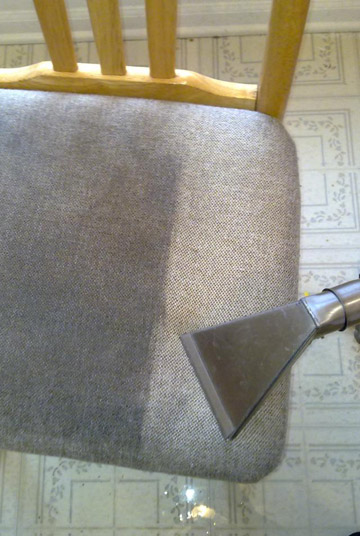 |
Before cleaningPre-Inspection when cleaning upholsteryWe carry out a thorough pre inspection of all couches, sofas, chairs, mattresses etc before doing any cleaning. Pre-Inspection is very important as it brings to our attention anything which we may feel needs to be mentioned to you prior to cleaning your soft furnishing upholstery. It also allows us to adapt our cleaning process depending on what is discovered. Below are a few of the more common existing conditions found on upholstered items which we document in our pre-inspection reports. Pre inspection can be carried out by both our sales team and our onsite cleaning teams. The Importance of Fibre Identification when cleaning upholstered items.It is important to know the fibre before cleaning is commenced .The reason for this is to assess what method of cleaning and what chemicals should be used. The testing of fibre is done by taking a small amount of fibre from an inside seam and burning it. By doing this we can determine from the colour of the flame, the smell and feel of the ash whether it is a natural fibre, animal or vegetable (wool, silk, sisal, cotton etc) regenerated manmade fibre (Rayon, acetates) or synthetic manmade fibre (acrylic, nylon, polyester or polypropylene.) All fibres have different needs in the upholstery cleaning process, and only when these are addressed do you get the best results. All our sales and cleaning technicians are trained in fibre identification. However we advise all clients when purchasing soft furnishings to find out what the fibre content is and cleaning specifications and keep these on file, so they can advise their cleaner. Piping, padding & seams when cleaning upholsteryThe condition of piping, padding and seams are important to note prior to cleaning of upholstered arm chairs, couches and cushions. This enables us to warn you of existing problems before upholstery cleaning take place .Secondly it enables us to take greater care over areas that potently have weakness’s when cleaning. Piping can be worn and frayed and the thread holding seams loose or perished. Like all of us we do not notice the wear and tear on our furniture until the cleaning is finished. Treating high soiled areas when cleaning upholstery.These are the heavily soiled areas like arm rests , head rests and were shoes may rub against the front skirt of arm chairs, wingback chairs and couches, sofas and lounge suites .They are also the favourite spots were animals might sleep or brush past the upholstered furniture to go through a door. They are not only the areas that are the most soiled but also get the most wear and tear. To get the best results of badly soiled areas on upholstery it is best to pre treat with a spray on detergent that is designed to help break down the additional grease and dirt. This is a bit like what you would spray on a shirts collar and cuffs prior to putting it in the washing machine. It is also important to note that no amount of cleaning will restore the wear, tear and fading on a couch, chair or bed head. They might have endured, once the dirt has been removed. Soiling very often masks wear and tear and once cleaned it becomes more apparent after cleaning. How to get out spots & stains when Upholstery cleaningSpots and stains are always a lot more successfully removed when upholstery cleaning if
So please help your cleaning team by advising them as to what caused a spot or stain. It is also very important to treat spots and stains prior to the overall upholstery cleaning procedure. If no one can remember what caused a spot or stain we can try and determined it by using at least 3 of the senesces; look, feel and smell. Our sales and cleaning technicians are all trained in identifying spots and stains. It is also important to realise that a stain by definition is a mark that is permanent in nature. Dependent on the fibre of your upholstery fabric will also determine whether a spot is in fact a stain. Natural fibre fabrics like wool cotton and silk to mention a few will dye more easily and permanently than say a synthetic polypropylene or solution dyed nylon. So as a client you need to be realistic in your expectations as to what an upholstery cleaner can get out and what permanent stains are. The presence of wear and tear prior to upholstery cleaningWear and tear shows up as soiled areas due to the pile being flattened, worn down or the change of colour as in fading and discolouration and cannot be restored. In some extreme cases the fabric is so worn that in fact what you perceive to be dirt is the piping or padding showing through. No amount of cleaning can restore a fabric that is worn. It is important to clean upholstery regularly as accumulated soil in the fibres of the fabric act as a sand paper effect wearing down the fibres as you use your upholstery. |

